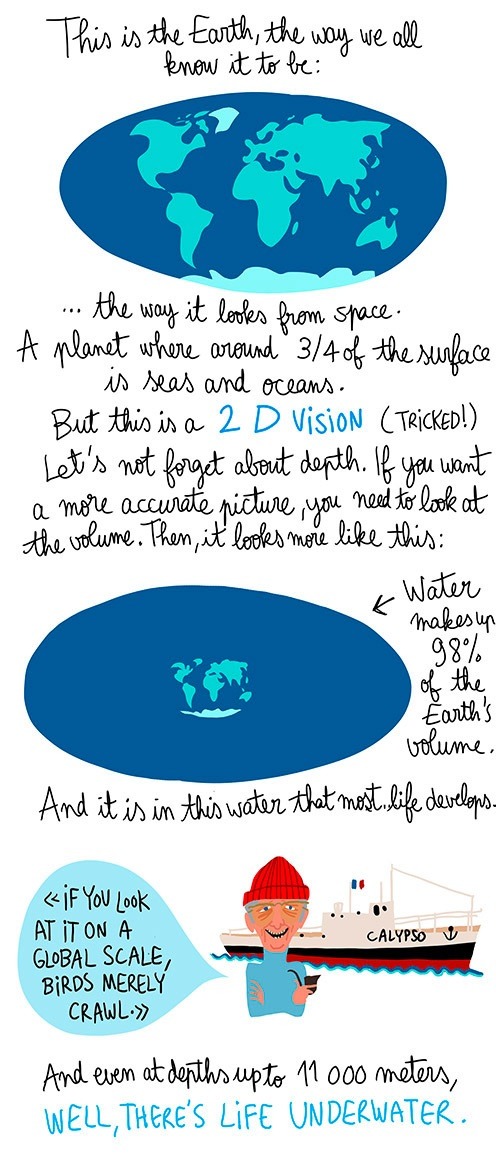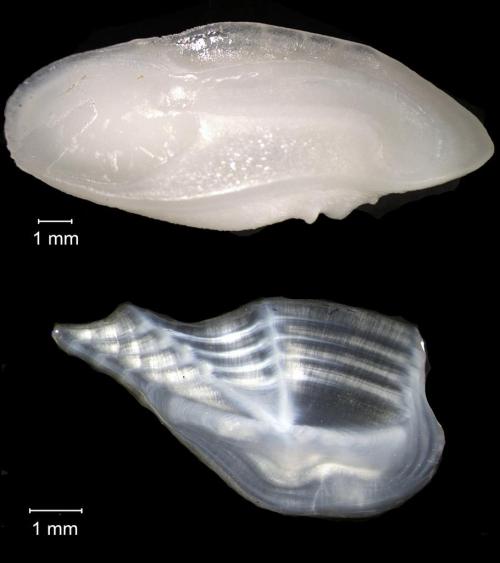Every Shark Week Special Ever
Every shark week special ever
Presenter: Sharks are actually quite gentle creatures see?
Presenter: Gets into the water
Narrator: HE JUMPS INTO THE OCEAN PUTTING HIS LIFE IN MORTAL DANGER
More Posts from Llamaslikesciencetoo and Others
dog









DEEP-SEA BOTTOM TRAWLING IS KILLING OUR OCEANS
Originally posted at Penelope Bagieu’s blog


What’s Next for the World’s Most Trafficked Mammal?
Earlier this week, a U.S. agency announced that it will consider giving greater protection to pangolins.
What’s a pangolin, you might ask?
Pangolins are creatures found in Asia and Africa that have a pinecone-esque appearance. They’re about the size of house cats, are covered in scales, and have very long tongues for slurping up ants and termites.
These pest controllers are a hot commodity on the black market, poached for nearly all their body parts. Their meat is considered a delicacy in Asia. Their scales, made of keratin (the main ingredient in fingernails), are fashioned into jewelry or used as traditional medicine, even though they don’t have any curative value. Even their blood, a supposed aphrodisiac, is dried and used in potions.
Considered the most trafficked mammals in the world, tens of thousands of pangolins are believed to be poached annually—bad news for an animal whose females reproduce only once a year.
That’s why in July 2015, conservation groups such as the International Fund for Animal Welfare and the Center for Biological Diversity petitioned the U.S. Fish and Wildlife Service to list seven pangolin species under the Endangered Species Act, a law that seeks to conserve endangered or threatened species throughout their range (an eighth species, the Temnick’s ground pangolin, found in southern and eastern Africa, is already protected under the act).
And on March 15, the agency said the organizations made a good enough case that it’s now willing to invite the public to weigh in on the proposal for 60 days.
No one knows exactly how many pangolins remain in the wild, but researchers are pretty sure the animals’ numbers are shrinking. Two of the four Asian species, the Sunda and the Chinese pangolins, are considered to face a high risk of extinction and the other two are “endangered,” according to the International Union for the Conservation of Nature, which sets the conservation status of wildlife. With the depletion of the Asian pangolins, smugglers have targeted their cousins in Africa, which are faring better but are nonetheless described as “vulnerable.”
U.S. Involvement
If the seven species gain protection under the U.S. law, it would be illegal for people to import the animals or their parts into the country—unless they’re being brought in to promote conservation. Same thing for sales across state lines.
Keep Reading

Come and take a “bite” out of nature & science, attending Explorers Society Members Event. #northmuseum #stemsisters #sharks (at North Museum of Nature & Science)
Is Ransom Okay I Heard A Coral Reef Died
70 Ask-Questions for Science people... because Science
What’s your major/field?
What made you choose your major/field?
What’s your favorite thing to do in the lab?
What’s the most interesting lab story?
What’s your favorite class?
Which professors do you ship together?
Annoying things your labmates do?
What are your thoughts on animal testing?
Any chemical burns or lab related accidents?
On a scale from 1 to 10 how sensitive are your lab scales?
Who’s your favorite scientist?
Who’s your least favorite scientist?
Favorite female scientists?
Do you do field work? What kind?
Ever tasted an experiment?
What are your typical daydreams about?
How often do you say “for science”?
Do you think about murdering someone with science?
Ever used your scientific knowledge for “bad” stuff?
Whats the most “evil scientist” thing you can think of?
If you had infinite funding, what would your research be about?
What is your favorite scientific theory?
Is a scientific mind attractive to you?
What is your title?
What is the role of technology in your field?
What do you enjoy most about doing science?
What do you enjoy least about doing science?
What is your tolerance on stupidity?
What are your strengths in your field of study?
Your weaknesses?
Do you have a bit of a god complex?
Why are biology majors so….you know..
What motivates you?
Do you like being supervised?
Describe your analytic abilities.
How would your friends describe you?
How would your professors describe you?
Is math a little bit too mathy for you?
Do you code? if yes, how many languages?
Thoughts on AI and robots?
What’s your favorite science blog?
Philosophical views on humanity and nature?
What are your short term and long term career goals?
Do you understand general relativity?
Favorite Dinosaur? Fossil? whatever…
How many bones can you name in medical terms?
How many muscles can you name in medical terms?
What’s your favorite molecule?
Do you like proofs or cold hard Mathematics?
What’s your favorite element?
Favorite show?
Favorite scientific fictional character?
What’s your favorite micro organism?
Have you ever held an organ in your hands?
Lab coats?
What about … lab goats?
White latex gloves or blue ones?
What’s the most dangerous experiment you’ve done in the lab?
What was the first time you got caught doing science?
What was you’r parent’s reaction when you told them you’re a scientist?
Except for lab coats in the bedroom what other kinks do you have?
What would you do a TED talk on?
Are you creative, artistic?
Do you have an attractive professor you can’t pay attention to?
What’s your favorite mineral?
What scientific books would you recommend?
Thoughts on spectral analysis?
Any interesting stories from the lab?
Ever did or thought about doing it or someone in the lab?
How much science is too much science?
Compiled by: rudescience


The Mud Dragons of Calvert Island, BC
Shedding light on these mysterious marine creatures.
by Josh Silberg
Spiky headed dragons roam the ocean floor from the poles to the tropics. But these are not winged beasts from the pages of science fiction. These strange creatures are Kinorynchs, aka “mud dragons“, and they are very real.
Roughly the size of a grain of salt, mud dragons are often overlooked, but a team from the Hakai Institute and the University of British Columbia (UBC) hopes to give them the spotlight they deserve.
“Canada has very few reports on these animals. The first step is to know what is there,” says Dr. Maria Herranz, a Hakai post-doctoral scholar and resident mud dragon expert at UBC…
(read more and see video: Hakai)
images by Marria Harranz
me, on a date: so what's your opinion on sharks?
them: oh my god they are such cold, heartless MONSTERS and-
me, shoving breadsticks in my purse: sorry but i have to go home, right now, immediately.


Climate change is not that complicated! (h/t)

Vaterite … from fish ears to crystal lattices
Deep within the ear of a fish you will find a little bone, an otolith. This bone acts as part of the sensory system of the ear, part accelerometer, part gravity sensor, part sound sensor. Otoliths are formed from calcium carbonate minerals, and different species of fish exploit different types of CaCO3 mineral. These CaCO3 “polymorphs” all have the same chemistry, but the arrangements of atoms within the crystal lattice of each are different, just as diamond and graphite are two polymorphs of carbon. Usually, a fish otolith grows as aragonite, sometimes as calcite, a different polymorph of calcium carbonate, and sometime as the third CaCO3 polymorph, vaterite.
Keep reading
-
 4lw4ystir3d liked this · 7 years ago
4lw4ystir3d liked this · 7 years ago -
 4lw4ystir3d reblogged this · 7 years ago
4lw4ystir3d reblogged this · 7 years ago -
 bre-for-b-a-p liked this · 7 years ago
bre-for-b-a-p liked this · 7 years ago -
 taciyet liked this · 7 years ago
taciyet liked this · 7 years ago -
 ajneon reblogged this · 7 years ago
ajneon reblogged this · 7 years ago -
 mystrothedefender liked this · 7 years ago
mystrothedefender liked this · 7 years ago -
 lgbtjedi reblogged this · 7 years ago
lgbtjedi reblogged this · 7 years ago -
 turtle-in-a-fedora-blog reblogged this · 7 years ago
turtle-in-a-fedora-blog reblogged this · 7 years ago -
 lifehasmanydoorsfuckboy reblogged this · 7 years ago
lifehasmanydoorsfuckboy reblogged this · 7 years ago -
 mypoorfaves liked this · 7 years ago
mypoorfaves liked this · 7 years ago -
 whumpylurker reblogged this · 7 years ago
whumpylurker reblogged this · 7 years ago -
 whumpylurker liked this · 7 years ago
whumpylurker liked this · 7 years ago -
 supermarsupial reblogged this · 7 years ago
supermarsupial reblogged this · 7 years ago -
 ouchthatwasgood reblogged this · 7 years ago
ouchthatwasgood reblogged this · 7 years ago -
 iwillneverstopfangirling reblogged this · 7 years ago
iwillneverstopfangirling reblogged this · 7 years ago -
 gloombog liked this · 7 years ago
gloombog liked this · 7 years ago -
 facingdemons-1164 reblogged this · 7 years ago
facingdemons-1164 reblogged this · 7 years ago -
 shrikeser liked this · 7 years ago
shrikeser liked this · 7 years ago -
 ichigopuddingmuslima reblogged this · 7 years ago
ichigopuddingmuslima reblogged this · 7 years ago -
 satansrectalcavity liked this · 7 years ago
satansrectalcavity liked this · 7 years ago -
 loqey-blog reblogged this · 7 years ago
loqey-blog reblogged this · 7 years ago -
 loqey-blog liked this · 7 years ago
loqey-blog liked this · 7 years ago -
 0iqgremlin liked this · 8 years ago
0iqgremlin liked this · 8 years ago -
 themoviewatcher2 liked this · 8 years ago
themoviewatcher2 liked this · 8 years ago -
 sugarbonbon reblogged this · 8 years ago
sugarbonbon reblogged this · 8 years ago -
 makoleaf reblogged this · 8 years ago
makoleaf reblogged this · 8 years ago -
 oh-werm reblogged this · 8 years ago
oh-werm reblogged this · 8 years ago -
 rutabegaville-blog liked this · 8 years ago
rutabegaville-blog liked this · 8 years ago -
 afraidothedark liked this · 8 years ago
afraidothedark liked this · 8 years ago -
 weekendatchasons reblogged this · 8 years ago
weekendatchasons reblogged this · 8 years ago -
 punchmekangaroo reblogged this · 8 years ago
punchmekangaroo reblogged this · 8 years ago -
 punchmekangaroo liked this · 8 years ago
punchmekangaroo liked this · 8 years ago -
 zacharyolson liked this · 8 years ago
zacharyolson liked this · 8 years ago
Mainly interested in ecology, but also the entirety of science.
179 posts